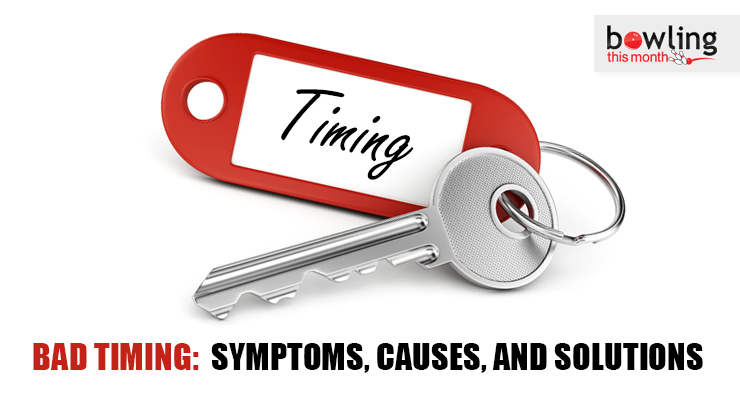The bowling term that is the most bandied about and, at the same time, misunderstood, is timing. If you were to ask 25 bowlers of all different levels what is meant by the word timing, you’d probably get 25 different definitions. Beginning bowlers will look at you with a blank stare, intermediate league bowlers will talk about what happens when their timing is off, high average bowlers will talk about having the fourth step back from the line and the pushaway occurring simultaneously, and elite bowlers and coaches will talk about where the bowler is in relation to the ball at the foul line or at some other point in the approach.
In its most simple form, timing is nothing more than how the swing process and the footwork of the bowler work together to enable the bowler to make a good shot, or work in opposing ways to cause the bowler to throw a bad shot. When the swing process and the footwork of the bowler are working together, it enables the bowler to consistently roll the ball in the same direction, with the same speed, and with the same loft each time. It also enables the bowler to keep his hand behind the ball and release through it, rather than around it.
A great majority of the problems that bowlers run into regarding timing are due to what is called “late” timing. All this means is that the bowler is getting to the foul line before the ball. Late timing results in a myriad of problems for the bowler: being off balance at the foul line, coming around the side or over the top of the ball, missing the target, and a loss of power in the release.
Let’s take a look at some of the elements that affect timing.
The swing process
The elements that affect the timing of the swing process include the position of the ball in the setup, the timing of the pushaway, the length of the pushaway, the direction of the pushaway, and the length (height) of the backswing. As the timing of the pushaway is the first non-static element in the process, the traditional approach of synchronizing it with the fourth step back from the line is an easy first step in creating proper timing. It is not, however, the be all and end all of timing.
Footwork
Timing is nothing more than synchronizing the elements of the swing process with the forward momentum of the bowler. The most prevalent element in establishing the momentum of the bowler is his footwork. Some coaches are now beginning to measure timing from the position of the ball in relation to the beginning of the ...
This article is only available to Bowling This Month subscribers. Click below to get instant access to this article and all of our other premium instructional content.
Subscribe to Bowling This Month
Already a Bowling This Month subscriber? Click here to log in.
Image Credits: Key illustration (©iStock.com/farakos) is licensed for use by BTM and is the copyrighted property of its original creator.
